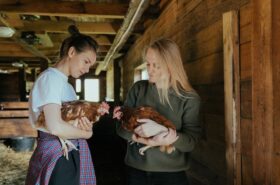The use of mobile apps has drastically increased in the last couple of years, thanks to the drastic adoption of smartphones and the internet. The agricultural sector has been one of the major beneficiaries of the mobile app revolution. There are several mobile apps that farmers can use to improve the way they run their farms.
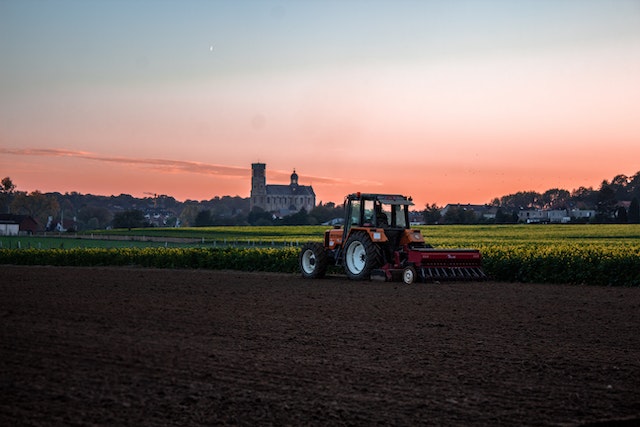
In today’s article, we will share the most useful mobile apps that any farmer interested in digitizing their farm operation needs to know about. We shall also examine the benefits of using these apps in your farm operations. For starters, let us look at some of the different kinds of mobile applications that every farmer needs to install on their smartphones.


eCommerce apps


These mobile apps aim to connect growers and traders in the agricultural sector. One of the major challenges that most farmers face is the inability to get buyers who can buy their produce at reasonable prices. These apps are for almost every stakeholder in the agricultural sector, including Farmers, cooperatives, wholesalers, brokers, importers, exporters, industry retailers, and more.
The good news is that most eCommerce apps are free for farmers and customers. Farmers are only charged when they make a successful sale on the app. For the best results, farmers are encouraged to capture clear, high-resolution images of their products. This makes it easier for customers to make a buying decision since they can easily see what they are buying.
Most eCommerce apps that are ideal for farmers are region-based, making it pretty easy for farmers to connect with buyers within their region. Besides selling, farmers can also use eCommerce apps to buy some farming consumables, tools, and equipment they need for their day-to-day operations.
Weather apps
Both iOS and Android have a weather app that comes pre-installed on their devices. Farmers can use this app to plan their operations to avoid being surprised by different weather conditions, including rain. Most pre-installed weather apps can provide a relatively accurate prediction of the weather conditions for at least one week ahead.
This is enough head room for farmers to plan their weekly operations. The good news is that these apps are free and available in most of the most popular languages. The common parameters that most weather apps provide include the expected temperatures, rain probability, humidity, visibility, and wind conditions.


Information apps
These are mobile apps aimed at providing farmers with all the information they need about farming. One of the best examples of such apps is Krish-e, which is an Indian-best app that helps farmers to get access to information, including land preparation, crop sowing, crop planning, fertilizer management, seed treatment, pest and disease management, crop diagnosis, and treatment, weed treatment, and irrigation.
You can also download this app even if you are not in India since it supports English along with a few commonly spoken local languages in India. Such apps are usually created by large corporations in the agricultural sector or governments. The goal is to avail important information to farmers for free.
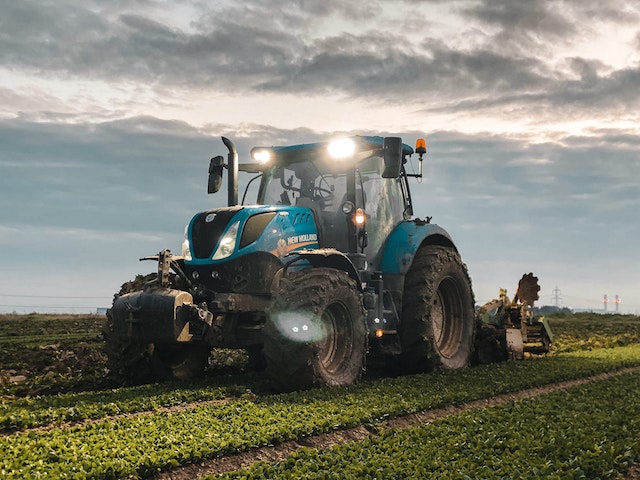

Hiring apps
If you are running a large farm or an agro-business, you will likely have to hire people to help you in some operations. Apps like FarmPost make it much easier to access the best talent in the agricultural sector. These apps allow applicants to add information such as their working experience to make it easy for farmers to choose the ideal candidate for the job.
Some of the hiring apps give job seekers the option to apply for available jobs listed by farmers. Farmers can also filter through the different applications using parameters such as experience, region, rating, and availability to choose the applicants that match their needs.


Project management apps
If you are running a large farm, you will usually have several projects going on at the same time. Manually tracking and monitoring the progress of all these projects might be challenging, especially if you have several people working on them. Using project management platforms such as ClickUp or Monday.com can significantly improve the way you manage projects.
These platforms can be accessed via desktop browsers on Windows and macOS or mobile apps usually available for Android and iOS. The only downside is that most of these apps require you to pay a subscription fee every month or year. If you are running a small business farm that cannot justify this monthly expense, you should use the default time and project management apps such as Reminders on iOS and Google Tasks on Android.
Livestock monitoring apps.
Livestock monitoring apps are usually cloud-based and are paired with sensors installed on the animal’s bodies to monitor parameters, including location, temperature, heart rate, and more. These sensors send the information to the cloud for further analysis and interpretation. The refined information about the animals is then sent to farmers through a mobile app.
These apps usually represent this information in a way that is easy and fast for farmers to interpret and make decisions. For instance, if an animal goes outside the designated boundaries, the location of this animal can be represented in an attention-catching color like red. Also, the health data gathered can be visually represented to help the farmer easily see the animals that might need medical attention.


Crop information apps
These apps are used to bring together all the information farmers need before making major planting decisions. Apps Such as Crop Farmers App can fetch information, including soil data that can be used to precisely carry out different farming activities. Some of this soil data may include information like color of soil, PH level, presence of carbon in soil, climate, and elevation based on the geographical locations.
This information can be used to determine the necessary farm inputs and water that are required to successfully cultivate certain crops. It can also be used to determine the best type of crops that should be grown in specific areas. Growing the right crops can help farms save money they would otherwise incur on agricultural inputs like fertilizers and irrigation.


Benefits of using mobile apps
Farmers get information on the go.


One of the major benefits of mobile apps over desktop or web applications is the ability to access all the information the farmer might need on the go. All the farmer needs is to have an internet connection. Most of these apps also send notifications if there are any critical updates that the farmer may need to know.
For example, most livestock monitoring apps will send instant notifications if any of the animals on the farm needs urgent medical attention. This enables the farmer to take action faster before issues get out of hand. Without this quick access to information, there is a possibility that specific issues on the farm could be detected when it’s too late to take any useful action.
So, having information in time can save an animal’s life or ensure other crucial farm activities such as irrigating seedlings are done in time.
Access to information about market prices


Farmers, especially those in rural areas, tend to sell their products at prices that are way lower than the standard market prices. With eCommerce apps, it is now easier for these farmers to check the prices of the different agricultural products in order to determine the appropriate price to sell theirs.
These apps also give them the chance to learn about the most valuable products in the market. This information can be used to decide the most appropriate crops to grow in order to generate much higher incomes from the farm. Without eCommerce sites, farmers are only able to get price details from a handful of local markets that are within their reach.
Easy access to farm inputs


In addition to giving farmers platforms to sell their products, mobile apps have also made it easier for farmers to access farm inputs, including fertilizers, pesticides, and more. Farmers can use big eCommerce platforms like Amazon or Alibaba to compare prices of the different brands and then choose the best possible options at the least possible price.
These platforms also have reviews from previous customers of all products, including farm inputs. This enables farmers to have all the information they need about the different brands of agricultural inputs before making the buying decision. Famers can also have a conversation with the sellers in order to get the ideal farm inputs based on the kind of crops they are cultivating.
Engaging with fellow farmers


Farmers can now create groups on instant messaging platforms such as WhatsApp and Telegram and use them to share helpful information and knowledge. These groups are usually effective if the farmers are within the same location. They can also be used to champion causes such as demanding better agricultural policies from their local leaders.
Better project planning and scheduling of tasks


If you are running a big farm with several workers and projects, you can now use a productivity management application such as Click Up or Monday.com to plan projects and schedule tasks. These apps can also be used to track the progress of the various task to determine if there are necessary changes that can be made to improve the way the task is being done.
Weather apps also help farmers to plan better. As we shared earlier, most weather applications can predict the weather conditions for up to 10 days. This gives farmers enough headroom to schedule farm tasks for the most appropriate weather.
It lowers labor costs.
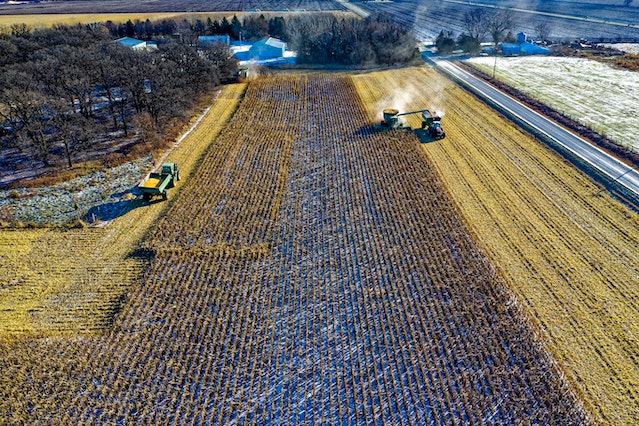

Most of the farming automation platforms have mobile apps that farmers use to access any information about the data the app is picking from their farm. These apps take on the role of humans that would have to collect this data manually. For example, if you are using sensors to monitor the temperature and heart of your animals, there is no need to constantly bring in VET doctors to manually measure such parameters.
With real-time access to information, humans will only come in when the need arises.
Eases access to labor
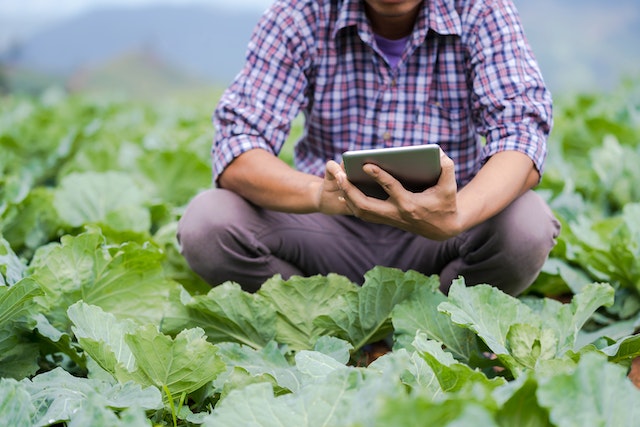

Mobile apps are also being used to connect farmers to potential workers. Before such platforms existed, the common method farmers used to look for potential workers was through word of mouth. Using word of mouth is a limited approach since it only gives you access to potential workers within your local area.
With recruiting apps, farmers have access to hundreds or even thousands of skilled laborers, including farm tractor drivers and veterinary doctors. These apps give you the full information about the job seekers, including their skills and experience. With this information, farmers can choose the best candidates for the job.
The role of smartphones and the internet
The only reason mobile apps have become popular is the rapid growth of the smartphone market and the increased availability of the internet. Over 5 billion people worldwide have access to the internet at the moment, up from about 2.1 billion ten years ago. The increase in the number of internet users is mainly due to a drastic drop in the cost of the internet.
Smartphones have also become popular over the years, thanks to the wide range of options available at different prices. You can now easily get a decent used phone for as low as $100. So, even farmers with relatively small farms can at least afford to buy a decent smartphone that they can use to access useful information or sell their products using a local marketplace application.
Final thoughts
There are many ways mobile apps have helped advance the agricultural sector. Accessing a wide range of farming-related information, including prices, soil data, and weather predictions has made life easier for millions of farmers worldwide. Now that smartphones and the internet are cheaper than ever before, farmers no longer have any excuse for not using some of the mobile apps we shared earlier in this article.



